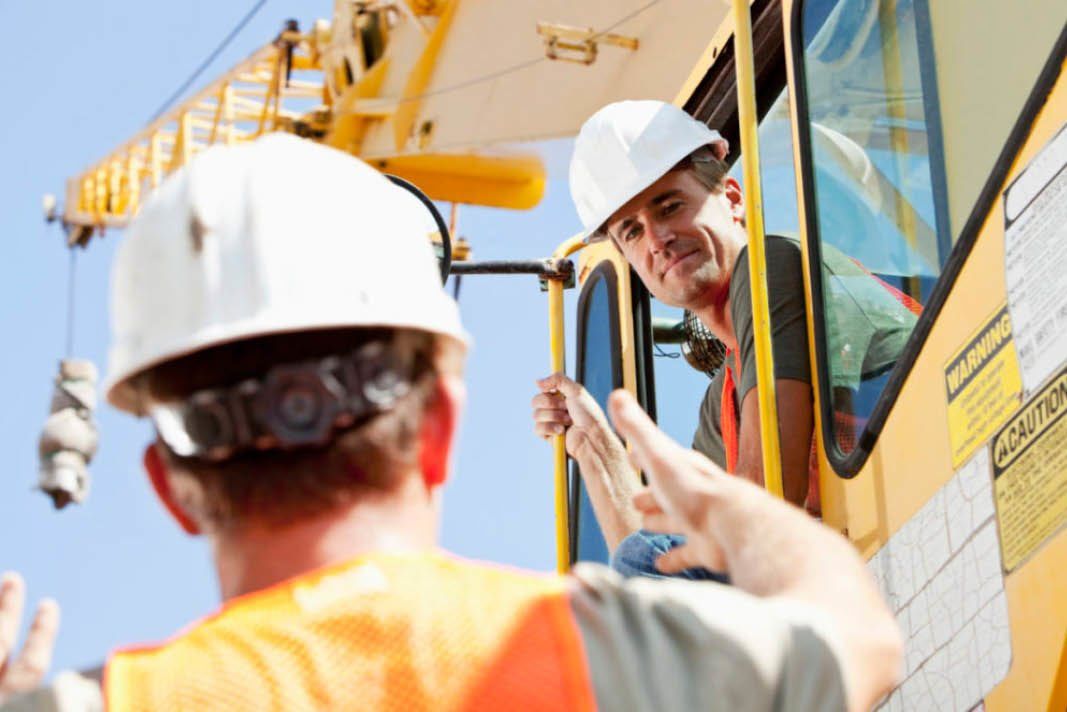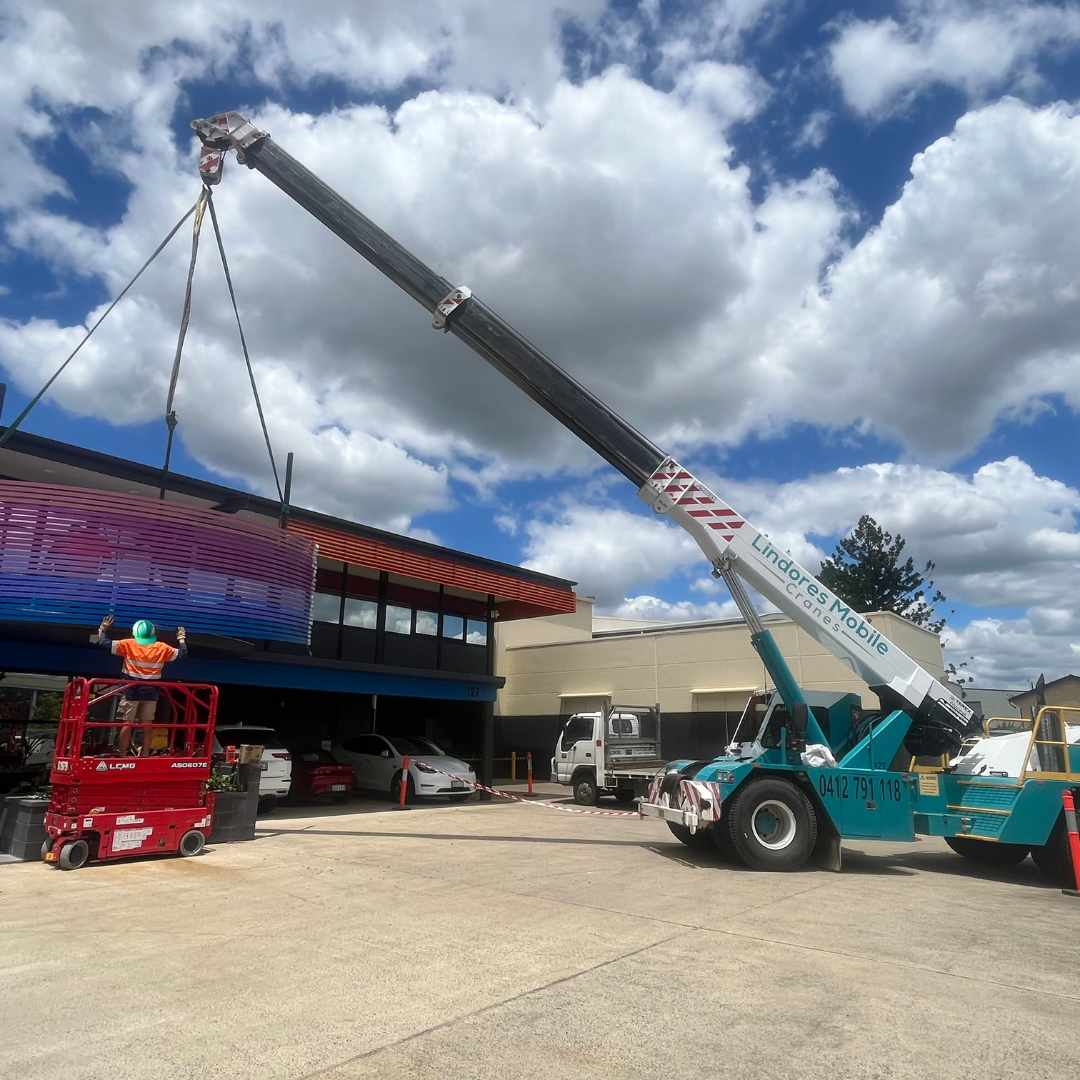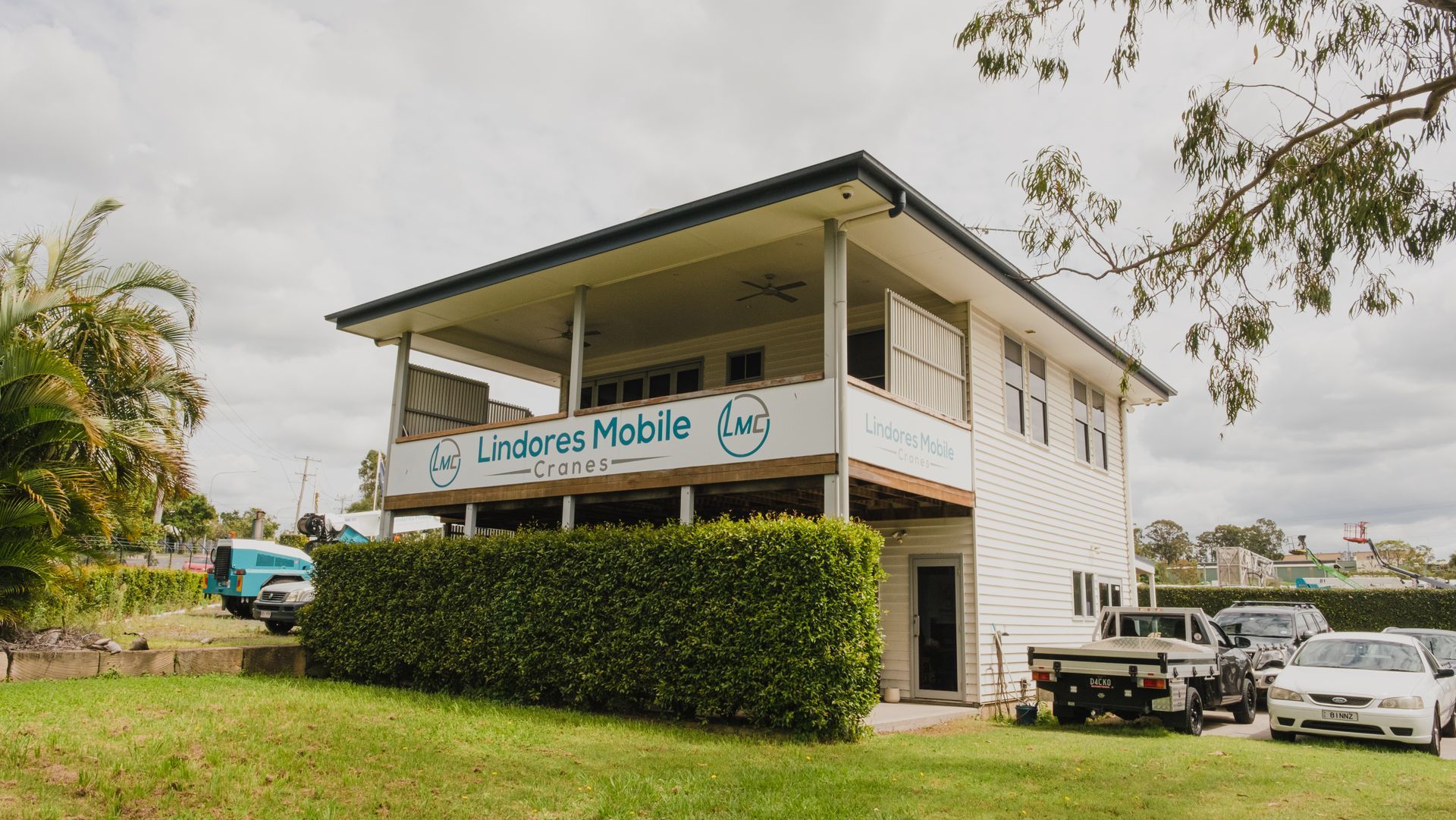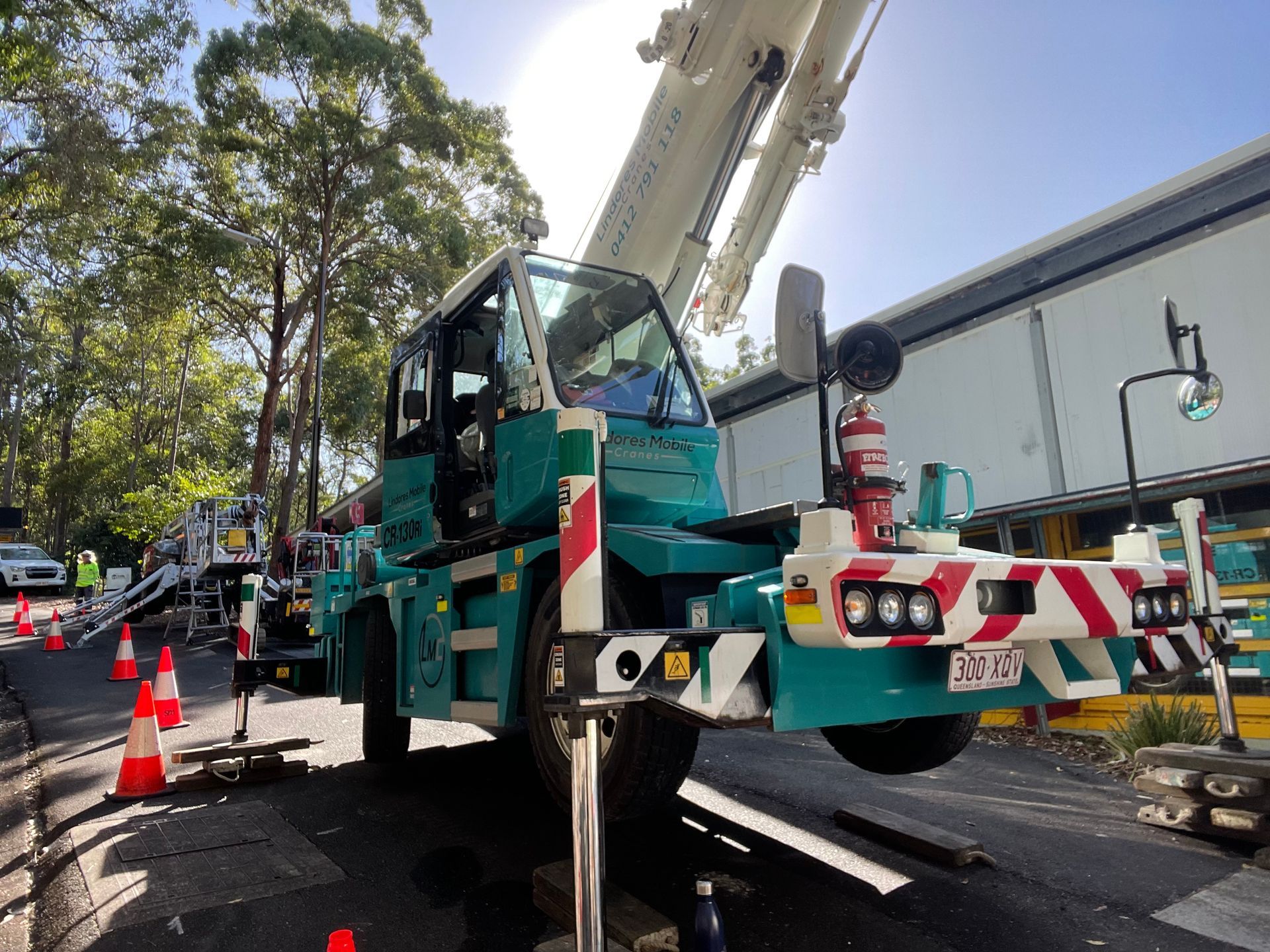Seven Crane Operator Hand Signals

No matter what type of job is on the cards, every crane operator knows that safety should always come first, and often use hand signals as a way to communicate.
Most people know that a crane is a machine that is used to lift and move heavy loads, machines, materials, and goods for a variety of purposes. From construction to manufacturing to shipbuilding and material loading, cranes are used in a wide variety of settings, sectors and projects. While they belong to the same machinery parent group, a mobile crane is an instrumental piece of equipment, mounted on a prime mover and controlled by pulleys and cables - think of a crane, only portable.
However, working with machines of this size and weight capacity requires a serious commitment to safety. A reputable crane operator should have a wide variety of qualifications, a wealth of experience, and most importantly, a thorough understanding of how to operate a crane safely. While there’s many ways to do so, one of the easiest methods includes hand signals - but what do they actually mean?
Understanding Common Crane Operator Hand Signals
Anyone who’s ever worked on a construction site is all too familiar with the fact that there’s often a lot going on. From coordinating multiple contractors, transporting materials and more, the level of noise on these types of job sites can often make it difficult to communicate with your fellow team members. For a crane operator, this is where the simple strategy of using hand signals can be most effective, with some of the most common including the following.
Stop
- Arguably the most critical hand signal used by a crane operator is conveying the need to stop. This is communicated by extending an arm, with the palm of the hand facing flat to the ground or surface.
Raise Boom
- For on site team members ready to signal to the crane operator that the boom needs to be raised, extend an arm outward, with all the fingers in your hand closed in a fist and the thumb extended. Proceed to gesture or point upward.
Lower Boom
- Once the crane operator is finished unloading and it’s safe to lower the boom, the hand signals to do so are simply the opposite of going up. The arm is extended, and the thumb is pointed in a downward gesture.
Swing Boom
- Used to let the crane operator know that the arm of the crane needs to be moved to the left or the right, this is a common gesture when mid task. Simply extend an arm away from your body, and point your index finger in the direction the boom needs to move.
Hoisting Down
- To signal that a load is ready to be loaded with the crane’s hoist, simply extend your arm vertically and point a finger toward the sky. While doing so, make small circles in a clockwise motion with your hand while keeping the index finger upright.
Lower Load
- To communicate to the crane operator that a load needs to be lowered, the process is similar to hoisting it. The point of difference is that although your arm is still extended, this time point a finger towards the ground and make circular movements with the hand.
Travel
- When the whole crane needs to be moved from one point to another on a job site, the primary travel hand signal involves extending your hand out to the side in the direction you need it to go, so that the crane operator can safely move to the next point.
In order to reap the benefits of hiring a mobile crane, the simple fact of the matter is that you need to avoid renting a lemon and to partner with a crane operator that truly values safety. More often than not, a less than ideal mobile hire company could very well cause more headaches than they do solutions, so it’s important for consumers to do their research and partner with a reputable provider - but where do you find one?
Sourcing Crane Hire Solutions With Lindores
Lindores Mobile Cranes (LMC) are a mobile crane and labour hire business that has unequalled experience in the construction industry spanning two generations. In operation since 2007, we’re a family owned business and are also proud owners of Brisbane’s only Humma crane.
Google reviews and even peers within the industry are always a good starting point to ensure that a mobile crane hire company is a reputable business provider. At Lindores, we’re only too happy to show you the feedback from our customers, as it’s something that we’re actually quite proud of.
At LMC, we pride ourselves on knowing what our customers require, and aren’t afraid to think outside of the box with suggestions in order to reduce costs and increase productivity. If you would like to explore your options regarding crane hire in South East Queensland or aren’t quite sure where to start, get in touch with us today.
The Liftout

At Lindores Mobile Cranes , we understand that the key to safe and efficient crane operations is regular preventive maintenance. By staying proactive, we minimise downtime, prevent costly repairs, and ensure our fleet remains in peak condition. Keeping our equipment in top-notch shape allows us to deliver the best possible service to you! Why is Preventive Maintenance Essential? Our cranes handle heavy loads daily and operate in demanding environments, which makes regular maintenance a top priority. Through routine inspections and servicing, we identify potential issues before they escalate, ensuring compliance with industry safety standards and extending the lifespan of our equipment. How Do We Maintain Our Cranes? Thorough Inspections We conduct daily and weekly checks on hydraulic systems, cables, brakes, and structural components to catch early signs of wear and tear. Lubrication and Fluid Monitoring Keeping our cranes properly lubricated and maintaining hydraulic and engine fluid levels helps us prevent mechanical failures. Routine Load Testing We regularly test our cranes to ensure they can safely handle the specified loads without risk of malfunction. Ongoing Operator Training Our experienced operators are trained to spot potential mechanical issues early, allowing us to address them before they cause disruptions. What are the Long-Term Benefits for Our Clients? ● Enhanced Safety – Our commitment to maintenance reduces the risk of accidents, protecting both our team and our clients. ● Operational Reliability – Well-maintained cranes mean fewer delays and smoother project execution. ● Cost-Effectivenes s – By preventing major breakdowns, we save on expensive emergency repairs and ensure competitive pricing for our services. Our Promise to You.. At Lindores Mobile Crane s, we take pride in maintaining a fleet that meets the highest standards of safety and efficiency. Our preventive maintenance program is more than just routine checks—it’s a commitment to delivering reliable, high-quality service every time you work with us. Why Choose Lindores Mobile Cranes ? When you partner with us, you’re choosing a team that values personalised service, unwavering dedication to safety, and a strong connection to the local community. As a family-owned business, we bring a level of care and expertise that sets us apart. Experience the difference our commitment makes— contact us today at lmcops@lmcranes.com.a u to learn more about our crane services.

At Lindores Mobile Cranes , cranes are in our DNA. We are a family-owned and operated company, dedicated to bringing you the best service. Our tight-knit team of skilled crane drivers, riggers and operations crew are passionate about delivering a personable experience that’s a cut above the rest. When selecting a crane service provider, opting for a family-owned and operated business like Lindores Mobile Cranes offers distinct advantages that can significantly enhance your project's success. In this blog, we outline some of the key benefits of working with a family-run company. Personalised Service Family-owned businesses often provide a level of personalised attention that larger corporations may lack. At Lindores Mobile Cranes , we take the time to understand each client's unique needs, ensuring tailored solutions that align with specific project requirements. Commitment to Quality and Safety With a family name associated with the business, there's an inherent commitment to maintaining high standards. We prioritise safety and quality in all operations, adhering to strict industry protocols to protect both our clients and team. Flexibility and Responsiveness Family-run operations can adapt quickly to changing project dynamics. Our team at Lindores Mobile Cranes is empowered to make swift decisions, allowing us to respond effectively to unforeseen challenges and keep your project on track. Deep Community Roots Being a family business, we have deep ties to the South East Queensland community. This local presence fosters trust and reliability, as we are invested in the success and development of our area. Long-Term Relationships We value building lasting relationships with our clients. Our family-oriented approach means we strive for repeat business and referrals, motivating us to exceed expectations consistently. Choosing Lindores Mobile Cranes means partnering with a team that offers personalised service, unwavering commitment to quality and safety, and a deep understanding of the local community. Experience the difference that a dedicated family-owned business can bring to your project. Enquire about our cranes today by contacting lmcops@lmcranes.com.au.

Operating mobile cranes is a critical part of many construction and industrial projects, but it comes with significant risks. Mistakes in crane operation can lead to project delays, equipment damage, or even serious injuries. At Lindores Mobile Cranes , safety and efficiency are at the core of what we do. Below, we’ll explore some of the most common mistakes in mobile crane operation and share how our team actively mitigates risks and prioritises safety on every lift. 1. Improper Site Inspection The Risk: Failure to assess the job site properly can result in uneven ground, insufficient clearance, or interference with nearby structures or power lines, all of which increase the risk of accidents. Our Solution: Lindores Mobile Cranes conducts thorough site inspections before every project. Our experienced team assesses the terrain, identifies potential hazards, and ensures the site meets all safety requirements. This proactive approach minimizes risks and ensures smooth operations from the outset. 2. Exceeding Load Capacities The Risk: Overloading a crane beyond its capacity can compromise stability, leading to equipment failure or tipping accidents. Our Solution: Our team rigorously calculates load weights and matches them with the crane’s capacity. We use advanced load-monitoring systems to double-check weight distributions in real-time. Additionally, our operators are fully trained to understand and adhere to each crane’s load chart. If necessary, we use multiple cranes to lift objects, ensuring sufficient lifting capacity and safe weight distribution. 3. Neglecting Proper Equipment Maintenance The Risk: Poorly maintained cranes are more prone to mechanical failures, which can cause downtime or dangerous malfunctions during operation. Our Solution: At Lindores Mobile Cranes , regular maintenance is non-negotiable. Our cranes undergo routine inspections and servicing by qualified technicians. We maintain detailed maintenance records and replace any worn parts before they become a problem, ensuring our equipment is always in peak condition. 4. Inadequate Operator Training The Risk: Untrained or under-qualified operators may misinterpret signals, improperly maneuver loads, or fail to respond correctly in high-pressure situations. Our Solution: We only employ certified and highly experienced operators. New employees receive consistent and thorough training and mentorship from senior members of our team, to ensure they uphold our high standard of service and operation. Additionally, our team is continuously trained and updated on the latest industry standards and safety protocols. 5. Ignoring Weather Conditions The Risk: Operating a crane in high winds, heavy rain, extreme temperatures or low-visibility heightens the risk of accidents, equipment damage and load instability. Our Solution: Weather conditions are always factored into our planning process. If conditions are deemed unsafe, we communicate transparently with our clients to reschedule operations. Our priority is always safety. 6. Failure to Use Proper Rigging The Risk: Improper rigging or using damaged lifting equipment can result in dropped loads, endangering workers and equipment. Our Solution: Our team is trained to select and inspect the right slings, shackles, and hardware for each lift. We follow strict rigging protocols to ensure every load is secure and balanced before lifting begins. 7. Poor Communication on Site The Risk: Miscommunication among team members can lead to errors in load handling, positioning, or crane operation, increasing the likelihood of accidents. Our Solution: We prioritise clear and consistent communication on all our job sites. Our operators, riggers, and ground crews use standardized hand signals and two-way radios to stay in constant contact, ensuring everyone is on the same page. Why Choose Lindores Mobile Cranes? At Lindores Mobile Cranes , we don’t just operate cranes – we deliver peace of mind. By prioritizing safety, meticulous planning, and industry-leading expertise, we ensure every lift is executed flawlessly. When you partner with us, you’re choosing a team committed to excellence, precision, and the highest safety standards. Ready to make your next project safer and more efficient? Contact Lindores Mobile Cranes today and experience the difference. For all enquiries, please contact lmcops@lmcranes.com.au.
